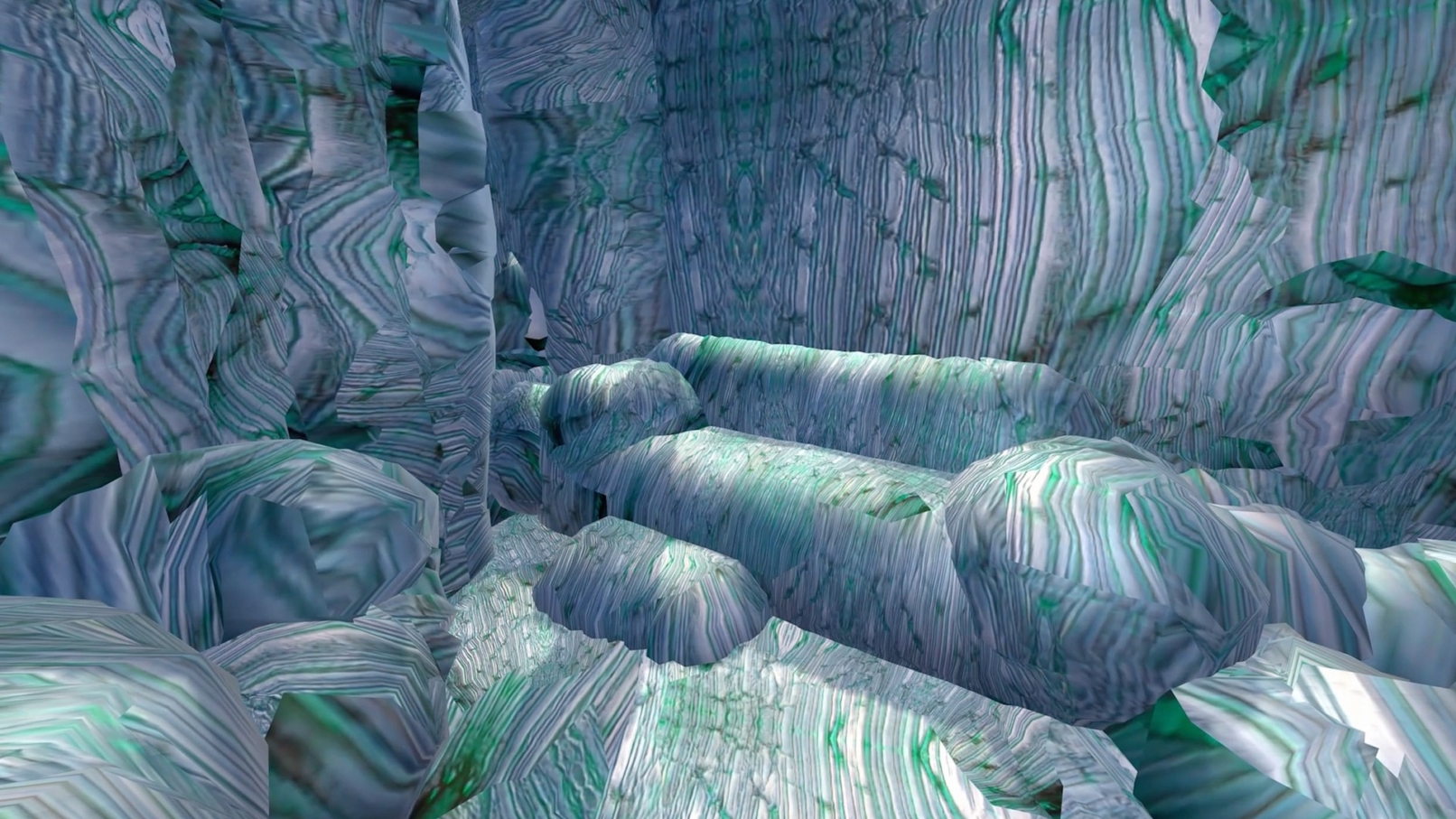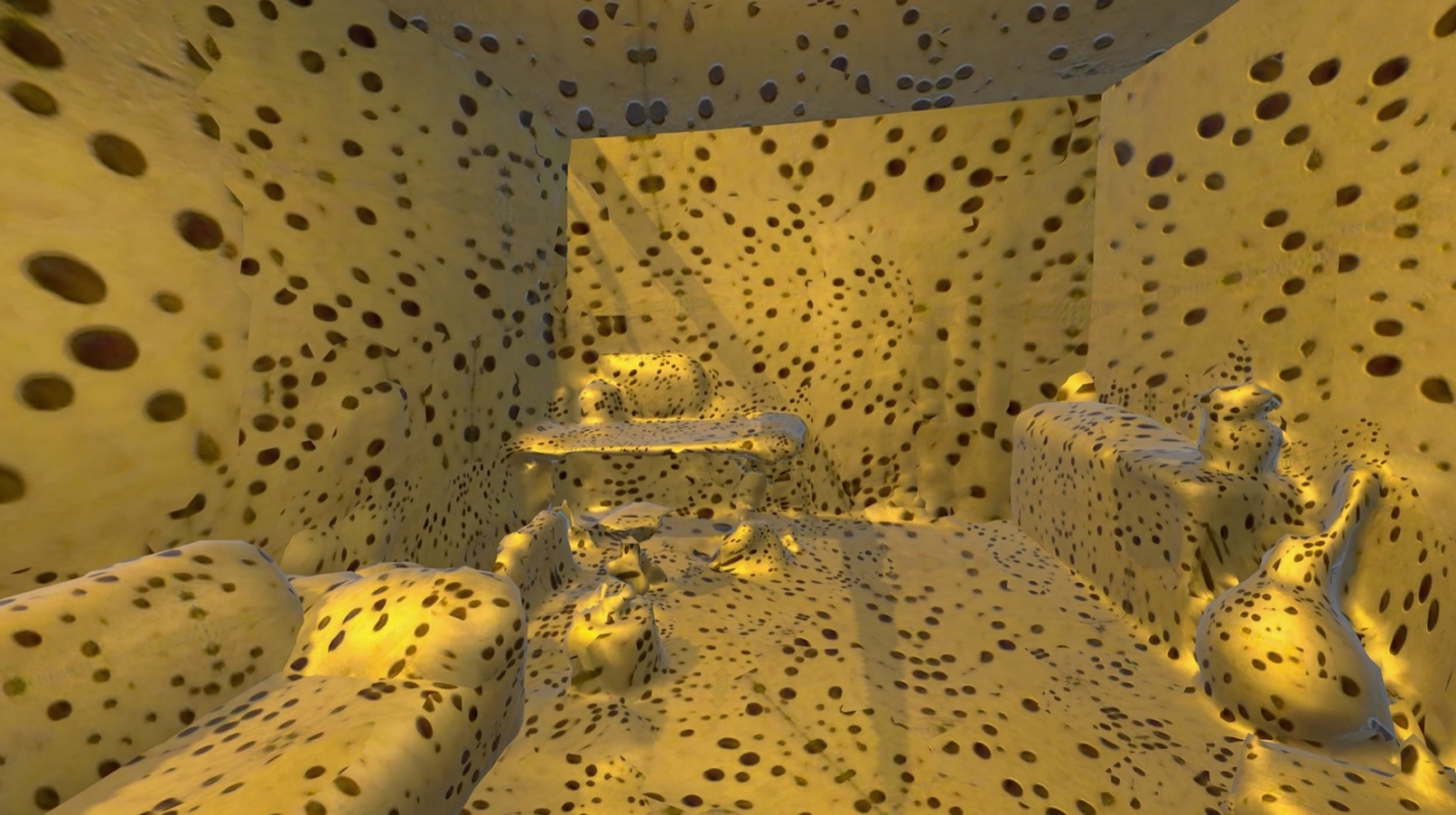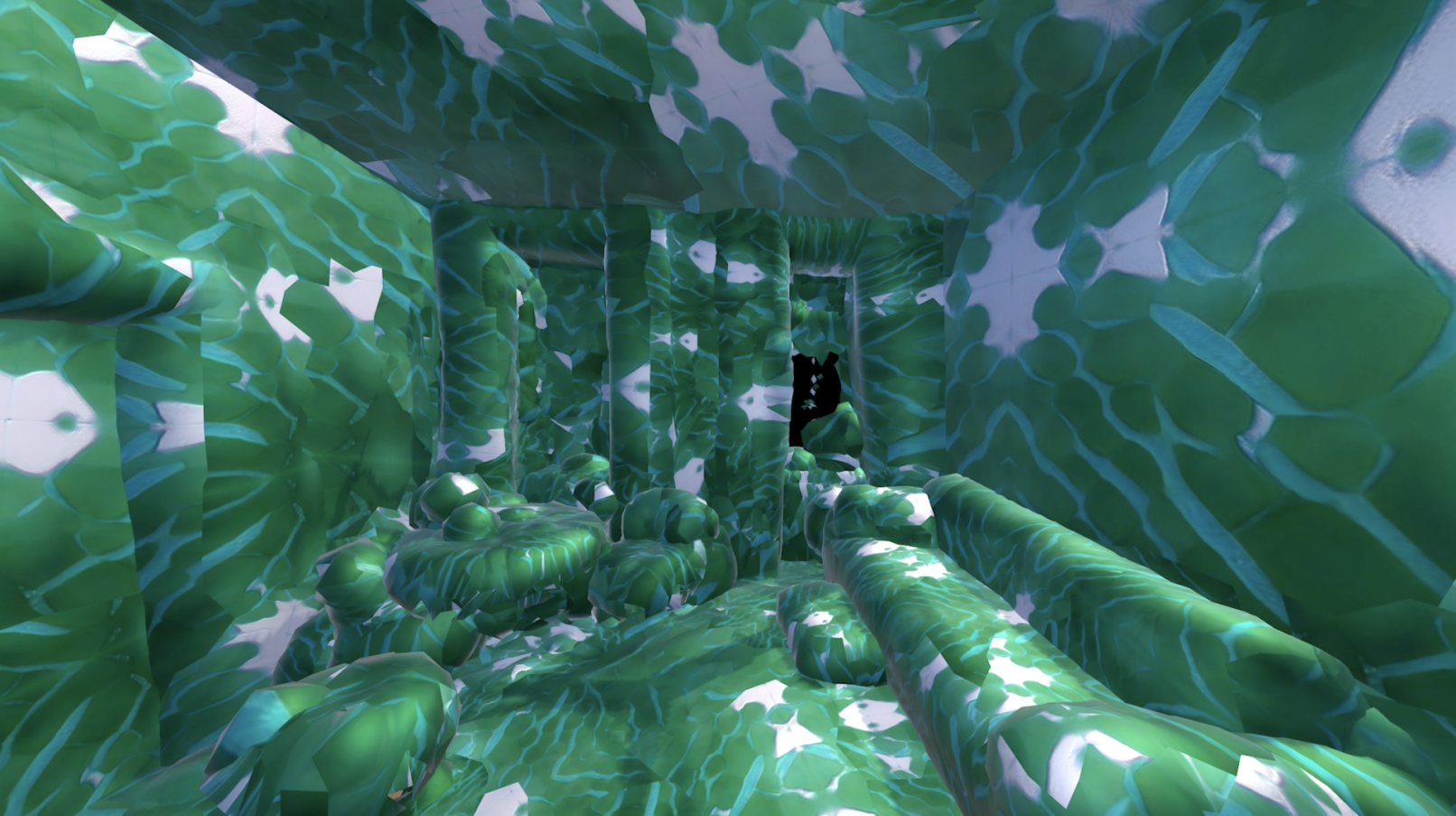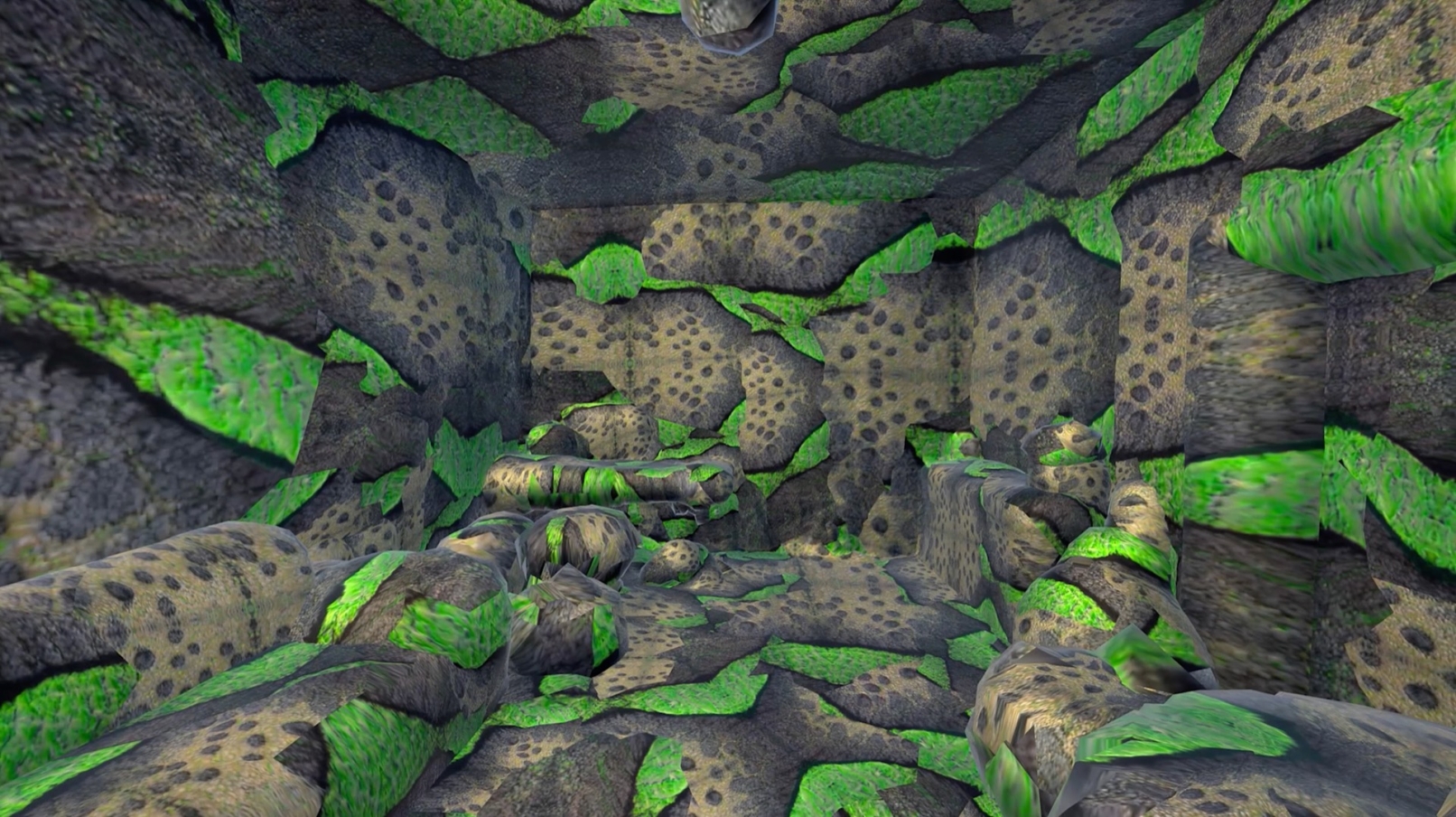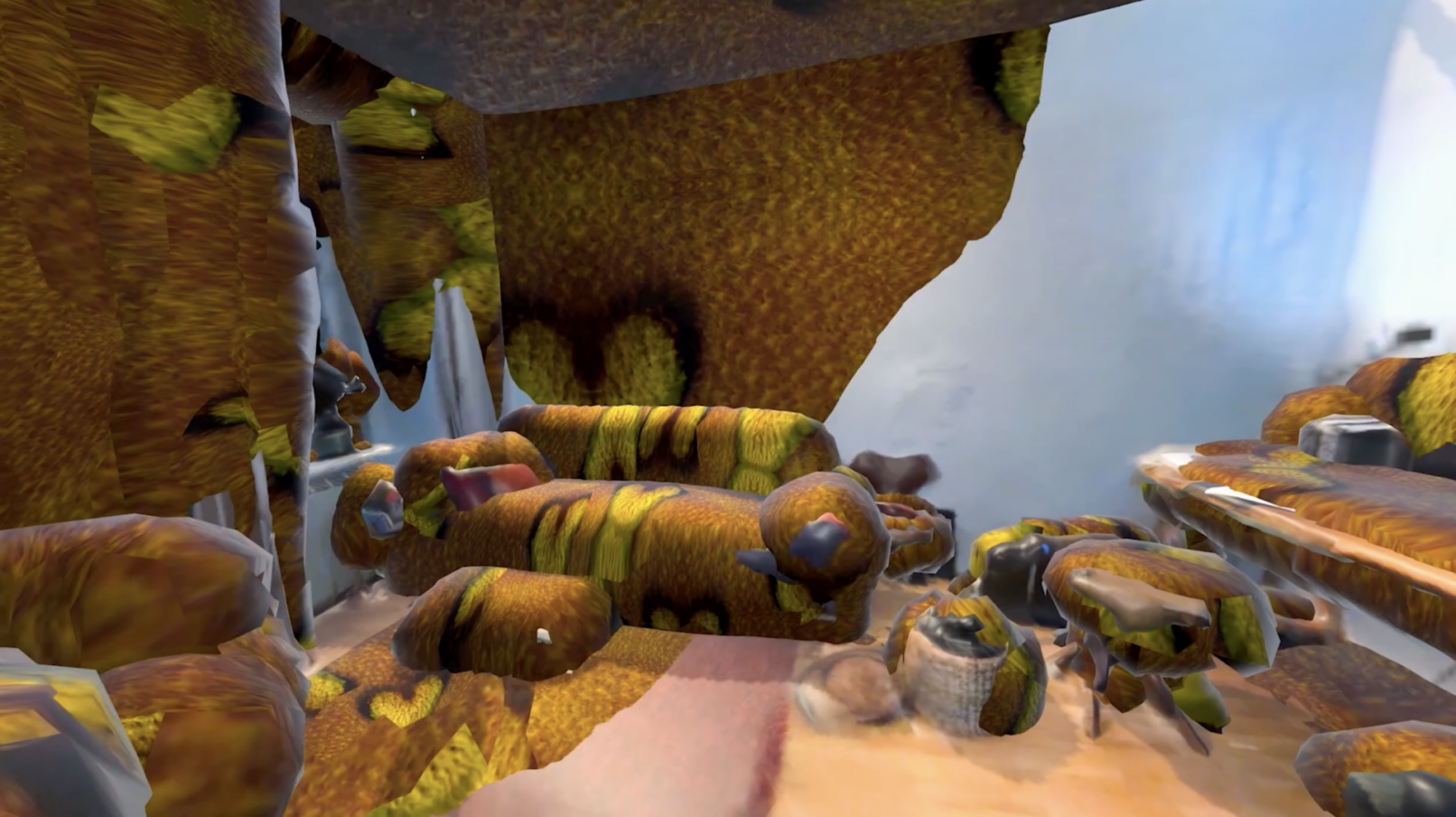Zoom out
Welcome to my home office.
I have spent the last two years here. Before the pandemic, my home was my base for relaxation and time off – familiar and with low arousal.
As an artist, creativity and inspiration are essential to my work. Usually, my sources of inspiration are arousals and unplanned impressions throughout my day.
When during the pandemic I suddenly had to work from home, and I had a hard time being creative. I needed to break out, but of course, without actually leaving the room.
I 3D-scanned my home office. As you can see, the resulting virtual reality is not perfect at all. Just look at the blob of flowers on my table or my notebook without its screen. These distortions from reality already triggered something in me. So I decided to take it even further.
I started to experiment with tracking my arousal through skin conductivity. And I hooked this real-time data up with a machine learning model that then learns to transform my virtual home office.
Within my artist residency at MindSpaces I explored the neglected inspirational potentials of boundaries in times of boundless work by linking my personal Home Office experiences with the general challenges of de-central work. In cooperation with MindSpaces partner CERTH, I utilized arousal tracking through electric skin response, virtual reality (VR) and machine learning to seek inspiration in virtually transforming my own four walls. Being confronted with a dulling perception and challenges to be creative when working at home, I imagined my home office to sense my state of arousal and search together with me for inspirational moments by infusing its familiar appearance with distortion.
Through a partnership of MindSpaces and Eina Idea, “Zoom out” was shown as part of SYNX at Sonar+D and STARTS AI and Music Festival at CCB Barcelona.
More information on the embedded human-A.I.-interaction, the arousal detection with Galvanic Skin Response (GSR) and the utilization of Stress-Aware Deep Reinforcement Learning in Virtual Environments can be found in this publication by myself, Maria Kyrou, Panagiotis C. Petrantonakis and Ioannis Kompatsiaris: https://dl.acm.org/doi/pdf/10.1145/3430524.3440647
Collaborators
Centre for Research & Technology Hellas (CERTH), up2metric, McNeel, Zaha Hadid Architects and Analog Native
Credits
Panagiotis Petrantonakis & Maria Kyrou – arousal tracking through Galvanic Skin Response (GSR)
Advice and support
Magdalena May – organisational psychology
Manuel Cirauqui – curation of SYNX.
Miquel Cardiel & Flor Salatino – integration in SYNX.
Mans_O – SYNX soundscape.
Hardware | Valve Index VR Headset | Empatica E4 Wristband
Software | Unity | ML-Agents | StylGAN2
References excerpt
Emanuele Coccia. 2016. Sensible Life: A Micro-ontology of the Image. Fordham University Press„ New York, NY :. https://doi.org/10.1515/9780823267446
Todd M Thrash and Andrew J Elliot. 2003. Inspiration as a Psychological Construct. Journal of personality and social psychology 84, 4 (2003), 871–889. https://doi.org/10.1037/0022-3514.84.4.871
Helmut Leder. 2003. Familiar and Fluent! Style-Related Processing Hypotheses in Aesthetic Appreciation. Empirical studies of the arts 21, 2 (2003), 165–175. https://doi.org/10.2190/G6MK-6KL7-KETB-ELND
William J Dickson and F. J Roethlisberger. 2003. Management and the Worker. Routledge, Florence. https://doi.org/10.4324/9780203503010
Bernat Cuni. 2020. Deep Textures / RunwayML residency — cunicode / Digital Craftsmanship. https://www.cunicode.com/works/deep-textures
